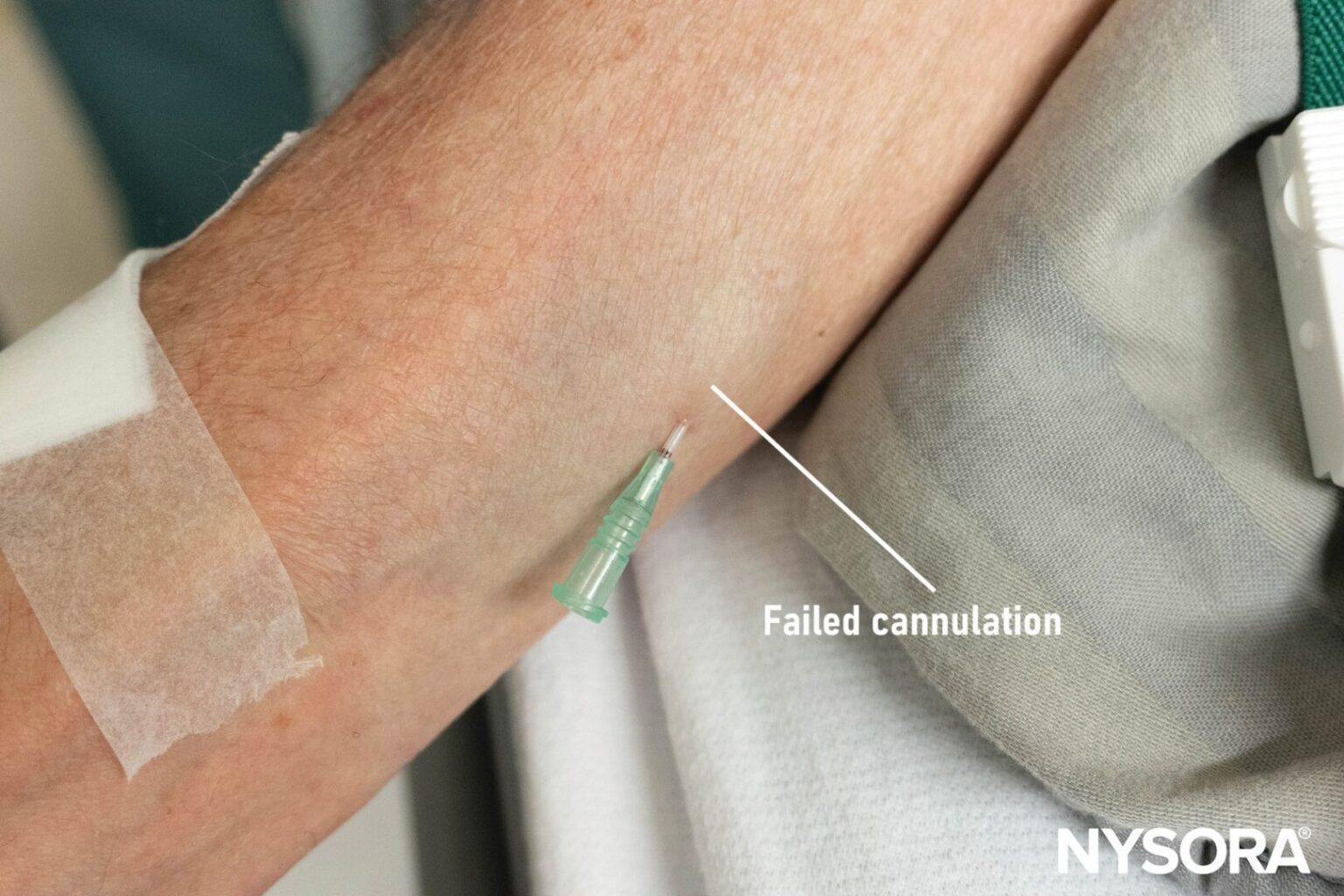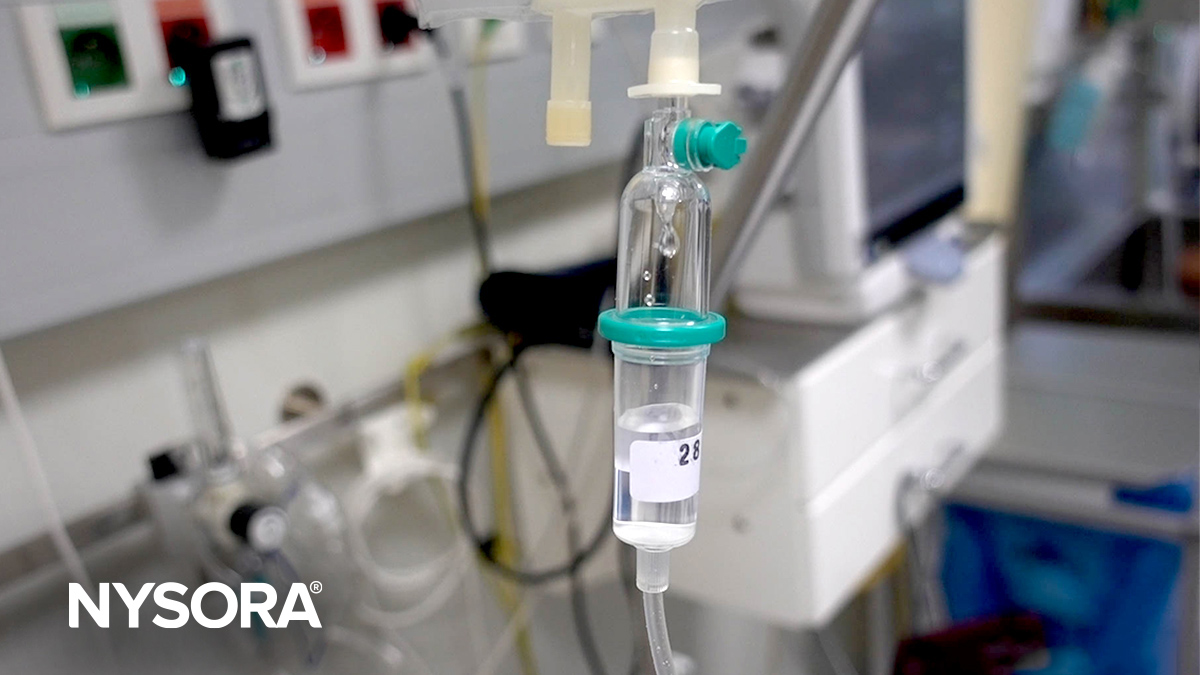This chapter focuses on identifying and correcting common mistakes during IV cannulation. By highlighting these errors, we aim to provide healthcare professionals with the insights needed to enhance their technique, reduce the risk of complications, and improve patient outcomes. This guidance is a foundation for novice and experienced practitioners to refine their skills, ensuring safer and more effective IV therapy.
Wrong choice of the catheter (A too-short catheter)
Mistake: A too-short catheter that only extends slightly into the vein is prone to dislodgement, particularly when the patient moves.
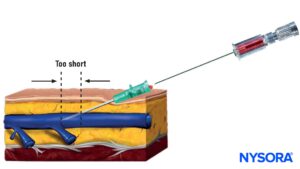
A catheter that is too short and only extends slightly into the vein is prone to dislodgement.
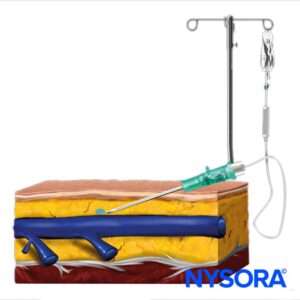
The short catheter is dislodged from the vein, resulting in paravenous infusion.
Solution: Using a longer catheter approximately 2 cm into the vein cm into the vein can prevent this. The additional length helps secure the catheter’s position within the vein, reducing the risk of slipping out.
VIDEO: https://youtu.be/gBoFavk6E18
VIDEO: https://youtu.be/A8RW-MTV7xo
Inadequate depth of the needle-catheter system in the vein
Placing the needle catheter sufficiently deep within the vein is a critical aspect of successful IV cannulation. This concept is vital because inadequate depth can lead to complications such as infiltration, where IV fluids enter the surrounding tissue instead of the vein, or extravasation, which can cause tissue damage with certain medications. Understanding and applying the appropriate depth ensures the catheter is properly positioned within the vein, securing effective medication delivery and minimizing patient discomfort.
Common mistake: Avoid immediately threading the catheter upon observing a blood flashback. While a flashback indicates the needle is inserted into the vein, it doesn’t confirm that the catheter is positioned within it. Advance the needle-catheter system slightly further into the lumen of the vein before attempting to slide the catheter in. Starting to thread the catheter before the needle and the catheter is fully in the lumen of the vein may lead to the catheter being lodged in the subcutaneous tissue instead of the vein, which is one of the most frequent errors.
Solution: A blood flashback is a sign that the needle tip is inside the vein lumen. Decrease the needle’s angle and advance the needle-catheter system deeper in the vein.

Inadequate depth of the needle-catheter system in the vein.
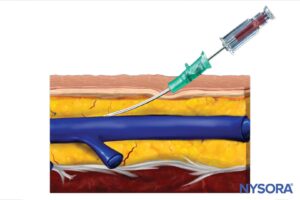
Premature threading might lead to the catheter being lodged in the subcutaneous tissue instead of the vein.
VIDEO: https://youtu.be/0s4nODZiTi0
Too steep angle of needle insertion
Mistake: Failure to advance the needle at a low angle often results in the needle passing through the vein completely and a catheter placement into the subcutaneous tissue underneath the vein.
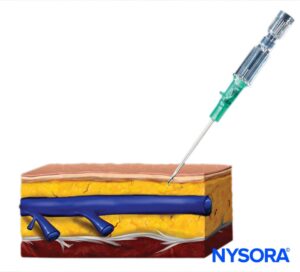
The angle of the needle-catheter insertion is too steep.
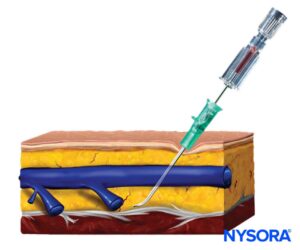
The catheter is placed into the subcutaneous tissue underneath the vein as the high angle will prevent the needle catheter from advancing into the vein.
Solution: Lower the starting angle of the needle-catheter system to redirect the needle and advance the needle-catheter system sufficiently into the lumen of the vein.
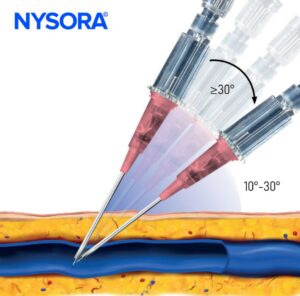
Lower the angle of the needle-catheter system to prevent placing the catheter into the subcutaneous tissue.
VIDEO: https://youtu.be/A07oEATMK9s
Hematoma formation after catheter removal following an unsuccessful attempt
Hematoma formation following the removal of a catheter after an unsuccessful cannulation attempt is a common complication that underscores the importance of strategy, precision, and care during IV procedures. This issue often arises from the puncture of the vein wall, leading to blood leakage into the surrounding connective tissue.
Mistake: Failing an IV usually does not result in hematoma formation. However, a hematoma occurs quickly if the catheter is removed while leaving the tourniquet in place. Therefore, do not remove the catheter immediately after an unsuccessful cannulation attempt. Removing the needle catheter will result in hematoma formation, necessitating the release of the tourniquet and extra time to stop the bleeding. This may complicate subsequent IV cannulation efforts.

Hematoma formation after catheter removal. Removing the catheter eliminates the vein “plug”.

Hematoma after failed cannulation: Extravasation of red blood cells. The needle is seen piercing the posterior vein wall.
Solution: In case of a failed attempt, temporarily leave the catheter in place, allowing it to function as a venous plug within the vein. This will prevent bleeding and allow you to try again.
VIDEO: https://youtu.be/0U2e8hdtNfI
Leave the catheter in position in case of a failed attempt, allowing the catheter to function as a venous plug.
VIDEO: https://youtu.be/O4cGKdTBgYo
Starting too proximally on the vein
Mistake: Initiating an IV line too proximally on the vein can reduce alternative options for venous access if the first attempt is unsuccessful. A prior attempt may cause injury to the vein, increasing the risk of fluid leakage into the surrounding tissue when a second attempt is made distally to the initial insertion site.
Solution: Whenever possible, approach the vein distally, ensuring options for additional attempts proximally if the initial IV insertion attempt is unsuccessful.

Approaching the vein distally allows for additional proximal attempts if the initial IV insertion attempt is unsuccessful.
Failure to secure catheter after insertion
Mistake: If the inserted catheter is left unsecured, it will likely become dislodged. This will lead to bleeding and hematoma formation, the need to compress the insertion site to stop the oozing, potential vein damage, and patient discomfort.
Solution: Secure the catheter immediately after insertion. Use tape or a specialized IV securing device to prevent accidental dislodgement. Prepare these securing materials beforehand so they are immediately available rather than having to gather them in the moments following insertion.
VIDEO: https://youtu.be/kgZVELYuWQs

Secured IV catheter with an occlusive dressing and tape. This dressing allows easy inspection of the insertion site.

Specialized devices may be used to secure the IV tubing to prevent dislodgement. Shown here is a velcro securing system.


